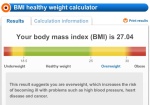Not a subject I usually think about, but in relation to the 5:2 way of eating, I was reading that Prof. Longo recommended to Michael Mosely that we should eat no more than 8g per kg body weight of protein from largely plant-based sources.
So how much protein do we eat, and where does it come from?
Since I’ve been logging everything I eat for the last 2 months (on MyFitnessPal), I now have some data to observe. On our 5:2 Fast Days, even when we have a protein rich breakfast and a protein and veggie dinner, I am well within the guidelines. But on normal days, even though my overall intake is usually no more than 1200 calories (perhaps because I am not having so much carbohydrate and fat), the amount of protein varies from around 40g to 60g or more. The majority of the protein I eat comes from meat, fish, eggs and dairy produce. Legumes (lentils, beans) and nuts also account for some – and a surprising additional amount is contained in many vegetables and grains.
A little digging soon revealed that it is not just Prog. Longo recommending a lower intake. The UK recommended daily allowance for women is 46g /day and for men 55g/day. The WHO recommended RDA of protein is just 35 grams a day (and that has an added safety margin included).
Most of us think of protein as healthy, filling, and useful to the body, supporting growth and keeping the immune system strong. So what’s the problem?
I dug out my copy of Patrick Holford’s Optimum Nutrition Bible: He says “Most people are in more danger of eating too much protein than too little. Excess protein is a contributor to osteoporosis, over-acidity and many other common health problems”.
Protein and Kidney Disease
..”high-protein diets may be associated with kidney function decline in women who already have mildly reduced kidney function. On further analysis, the risk was only significant for animal proteins, indicating that the source of protein may be an important factor.” .. The American Diabetes Association suggests that people with diabetes — the number one cause of kidney disease — consume no more than 20 percent of their calories from protein.
Protein and Coronary Artery Disease
The American Heart Association, or AHA, notes that high-protein diets de-emphasize high-fiber, plant-based carbohydrates that help your body block the absorption of cholesterol…. It is possible to follow a high-protein diet and not increase your risk of heart disease if your protein comes from plant-based sources such as legumes, soy and nuts…
Other Dangers
Other health concerns are associated with a high-protein diet, including an increase in blood pressure and a risk of fractures due to osteoporosis. In addition.. “eating a diet high in protein and sodium but low in fiber” increases your risk of kidney stones. ..
What seems clear to me is that I – and probably most other people – am unwittingly eating far more than the RDA of protein and that may be contributing to increased and avoidable health risks.
I’ve already started “bulking out” many of our main meals with beans, lentils and vegetables, so now I’m definitely going to be looking at replacing more of our animal protein with plant-based proteins and see how that affects our overall numbers. Intermittent Fasting is at least giving us some days of lower protein intake, but there is more that we can do.
For those who eat a purely vegan or largely vegetarian diet, the issue of balancing amino acids is important, as many plant based proteins are incomplete. I came across this handy looking app that will help you to find the complementary foods to complete the amino acids and create a high quality protein meal.
Fascinating stuff, getting healthy!
Where’s that recipe for nut loaf?

